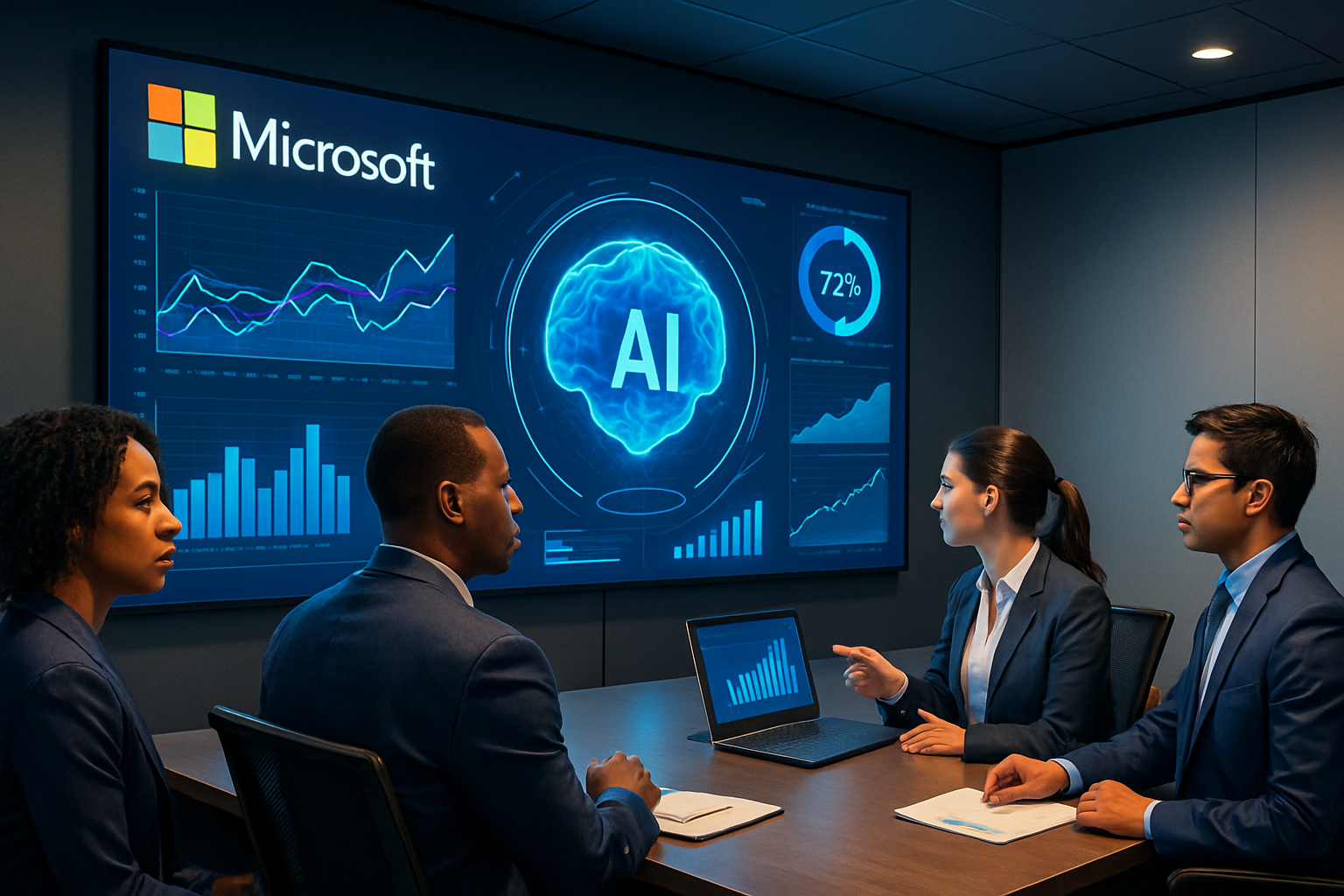
AI CERTs
2 months ago
AI productivity engines reshape Microsoft hiring
Enterprise leaders sense a turning point. Microsoft has reignited growth talks, yet its message differs from past booms. The company now frames expansion around AI productivity engines, not pure headcount. Consequently, investors, HR chiefs, and rivals must reassess how work gets done. This article unpacks the signal, the numbers, and the roadmap.
Nadella Hiring Signal Shift
Satya Nadella’s recent podcast comment ricocheted through boardrooms. He said Microsoft will hire again, but with “more leverage than pre-AI.” In essence, smaller teams plus AI productivity engines equal higher output. Meanwhile, Microsoft AI hiring continues in research, product, and infrastructure, despite earlier layoffs.

Podcast Quote Unpacked
“Any planning, any execution, starts with AI,” Nadella noted. Therefore, talent priorities now orbit copilot development, model safety, and automation orchestration. Moreover, the phrase signals new job archetypes such as prompt engineers and AI ops specialists.
The section underscores Microsoft’s cultural reset. However, understanding the capital behind that reset is crucial. Accordingly, we next examine spending.
Capital Investment Surge Explained
Microsoft committed roughly $80 billion to AI infrastructure for fiscal 2025. Consequently, data-center partners, GPU vendors, and energy suppliers all benefit. In contrast, non-strategic consulting hiring paused to fund that outlay. This alignment shows how AI productivity engines demand both cash and focus.
Infrastructure Spend Breakdown
- Data centers: multi-region builds targeting lower latency for AI-driven collaboration
- GPUs: bulk purchases from Nvidia and emerging suppliers
- Networking: high-bandwidth links for generative workloads
Furthermore, the company poached DeepMind veterans, strengthening research depth. These moves confirm that Microsoft AI hiring now hinges on elite expertise, not volume growth. Capital and talent thus fuse into a single flywheel. These financial choices ripple into workplace design, as the next section shows.
Evolving Enterprise Job Profiles
Leaders must rethink roles as AI productivity engines automate drafting, summarization, and analysis. Consequently, job postings list skills like prompt crafting and agent orchestration. Meanwhile, frontline workers gain new copilots that shift task balance toward oversight.
New Skills In Demand
McKinsey predicts massive productivity gains when generative workplace tools scale. Therefore, HR teams target:
- Copilot integrators fluent in generative workplace tools
- ML engineers driving AI-driven collaboration pipelines
- Compliance leads governing copyright and data usage
Professionals can validate expertise through the AI+ HR™ certification. Subsequently, these capabilities feed the economic case explored below.
AI Productivity Economics Overview
McKinsey values generative AI’s annual upside at up to $4.4 trillion. PwC forecasts $6.6 trillion in productivity gains by 2030. Such figures justify aggressive investment in AI productivity engines.
Trillions On The Table
Key numbers highlight momentum:
- 228,000 employees remain after 2025 cuts, yet output is rising.
- Generative workplace tools can boost software development productivity by 55%.
- Customer operations stand to gain 30% efficiency from AI-driven collaboration.
Consequently, boards perceive a clear ROI path. Nevertheless, risks loom, as detailed next.
Risks And Friction Points
Rapid automation creates displacement anxiety. Moreover, capital intensity pressures margins before savings materialize. Dependence on OpenAI models and scarce chips also threatens resilience. Ethical issues around hallucinations and IP further complicate deployment.
Governance And Reskilling
Organizations must couple AI productivity engines with structured retraining. Thankfully, emerging enterprise automation trends include dedicated reskilling budgets. Nevertheless, success demands transparent metrics and strong change management. These safeguards set the stage for actionable guidance.
The section highlights trade-offs leaders face. Therefore, practical steps are essential.
Roadmap For HR Leaders
HR executives should build phased strategies. Initially, map tasks to copilot capabilities. Subsequently, draft new competency frameworks aligned with Microsoft AI hiring exemplars. Furthermore, track adoption through productivity KPIs.
Action Steps Checklist
Follow this concise playbook:
- Audit roles against automation potential and enterprise automation trends.
- Launch pilot projects with generative workplace tools.
- Partner with finance to model savings and reinvestment paths.
- Offer AI+ HR™ training to people leaders.
- Create ethical guidelines for AI-driven collaboration workflows.
These steps turn strategy into execution. In contrast, ignoring them risks productivity setbacks. The final section distills core lessons.
Strategic Takeaways And Outlook
Microsoft’s pivot signals a broader work revolution. Capital, talent, and productization converge around AI productivity engines. Consequently, enterprises must redesign jobs, reskill staff, and govern new risks. Moreover, smart adoption of generative workplace tools will separate winners from laggards. Future hiring will prioritize leverage, not volume. Leaders who move first will capture outsized value.



